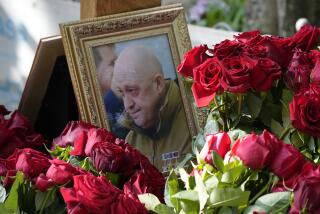Pilot Error Seen as Probable Cause of French Airbus Crash
- Share via
PARIS — Pilot error and not revolutionary cockpit computer technology was the most likely cause of the crash of a newly built Airbus A-320 that killed three people and injured 20 during an air show over the weekend, officials said Monday.
Transport Minister Louis Mermaz absolved the computer system, while a public prosecutor leading the inquiry into the crash blamed the pilot, Michel Hasseline, who survived, for flying too low. But the prosecutor said technical failure could not be completely ruled out as the cause of Sunday’s accident.
Welcoming the findings, the plane’s manufacturer, Airbus Industrie, said both statements cleared the plane. “This goes a long way toward vindicating the A-320,” a senior company official, Robert Alizart, told Reuters news agency.
The plane is the first commercial aircraft to use revolutionary technology that replaces the hydraulic systems of a standard aircraft with computer-driven controls. The advanced technology has been a major selling point for the plane, which is built by Airbus, a consortium of companies from Britain, France, West Germany and Spain.
The Air France airliner, with 136 people aboard, crashed into a forest and burst into flames just seconds after doing a low-level flight over the Habsheim airport near Mulhouse, not far from the Franco-Swiss border. About 20 passengers were injured, some seriously, but police and eyewitnesses said it was a miracle that most survived the crash.
No Doubt Cast on Aircraft
“After talking to witnesses, studying films of the crash, and preliminary investigation of the black boxes, no information now available casts any doubt on the aircraft,” Mermaz told a news conference in Paris.
The director of French civil aviation, Daniel Tenebaum, said that if the pilot had boosted the engines two seconds earlier, disaster would have been averted.
“They crashed five seconds after increasing power,” he told the Paris news conference. According to the manufacturers, it takes seven seconds for the plane’s engines to respond to the pilot’s touch.
More to Read
Sign up for Essential California
The most important California stories and recommendations in your inbox every morning.
You may occasionally receive promotional content from the Los Angeles Times.













